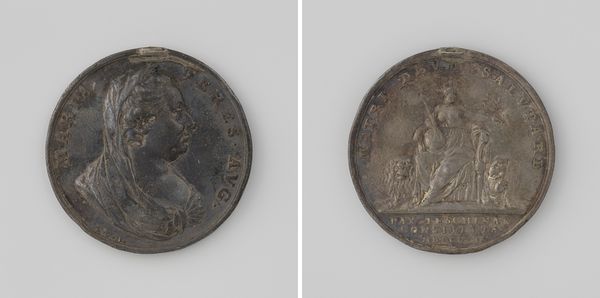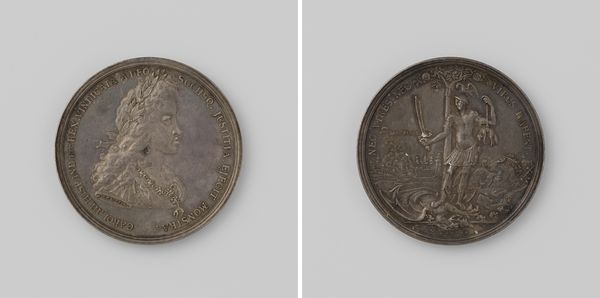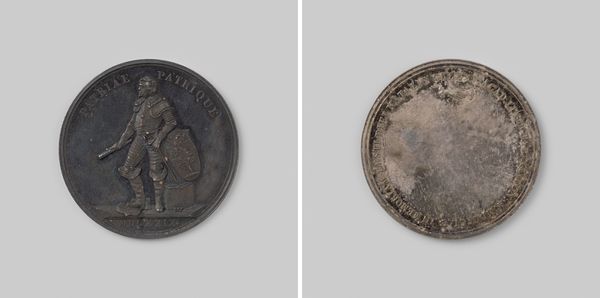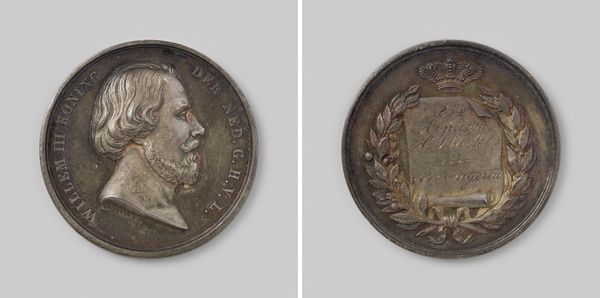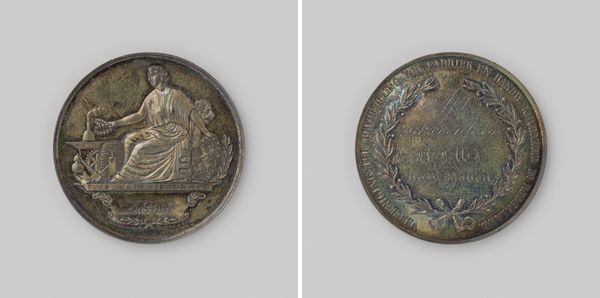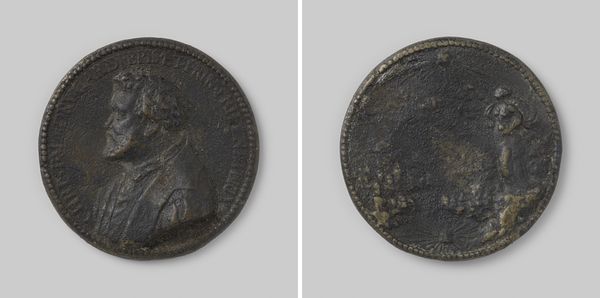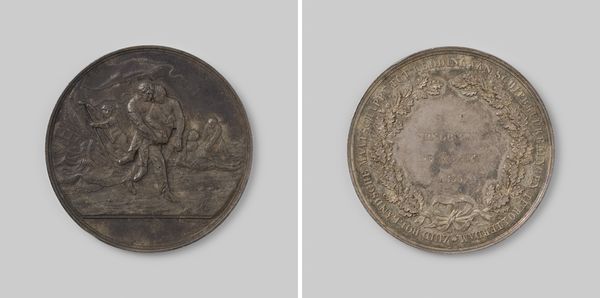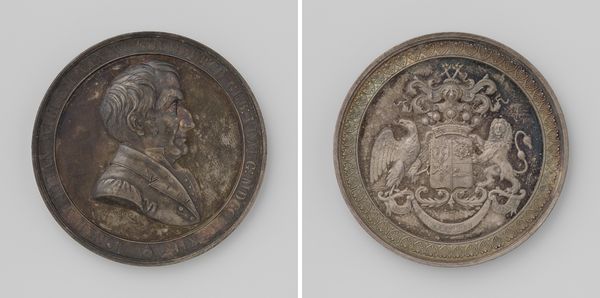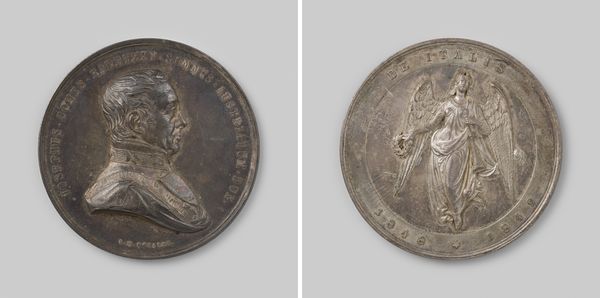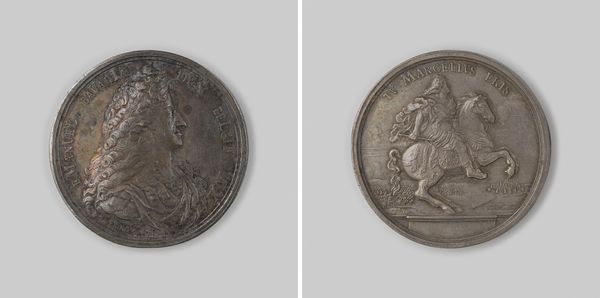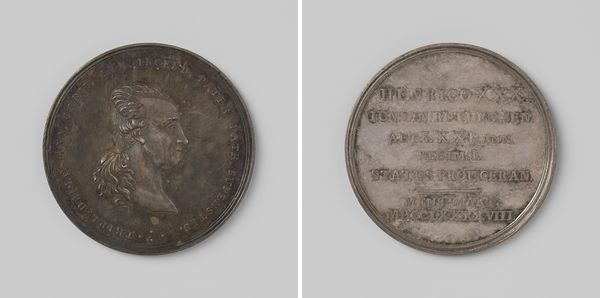
Terugkeer uit Brussel van het Mariabeeld van 's-Hertogenbosch, ter ere van Johannes Zwijsen, aartsbisschop van Utrecht 1853
0:00
0:00
metal, relief, sculpture
#
portrait
#
metal
#
sculpture
#
relief
#
sculpture
#
ceramic
#
history-painting
#
miniature
Dimensions: diameter 4.1 cm, weight 30.17 gr
Copyright: Rijks Museum: Open Domain
Editor: So, this is a metal relief sculpture from 1853 by C. van Gemert. The title is quite a mouthful: "Return from Brussels of the statue of Mary of 's-Hertogenbosch, in honor of Johannes Zwijsen, Archbishop of Utrecht". It looks like a commemorative medallion, almost like a coin with religious figures. I am curious to learn more; how do you interpret this work within its historical context? Curator: This medallion gives us a glimpse into 19th-century religious and political sentiments. The return of the statue suggests a period of upheaval or displacement. We need to ask, why was it in Brussels, and why was its return so significant that it merited commemoration? Understanding the relationship between the Catholic community of 's-Hertogenbosch, Brussels, and the Archbishop of Utrecht, is crucial. Editor: That's fascinating. So, the return wasn't just a simple relocation, but held deeper symbolic meaning related to religious identity and potentially sociopolitical power dynamics? Curator: Exactly. This piece functions as a form of historical documentation and a cultural artifact reflecting the complexities of the time. Think about what a return *symbolizes*: renewed faith, reassertion of power, or even resistance against external forces. Van Gemert captured not just an image but also a narrative charged with cultural and political implications. What audience was this intended for, and what message did they take from it? Editor: This makes me consider the intended audience and its significance. Perhaps the medallion functioned as a reminder of resilience during a period of hardship or oppression, fostering unity within the Catholic community. Curator: Precisely! It prompts us to examine broader narratives about the role of religion in shaping collective identity and social cohesion. Editor: I hadn’t initially considered how deeply entwined this seemingly simple medallion is with themes of identity and power! Thank you! Curator: And thank you for looking beyond the immediate image. Art like this calls us to consider these questions and reflect upon our history.
Comments
No comments
Be the first to comment and join the conversation on the ultimate creative platform.
